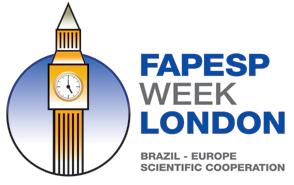USP group maps the diversity of algae in the state of São Paulo
With the help of molecular tools such as DNA barcoding, researchers have identified nearly ten new species
By Karina Toledo, in London
Agência FAPESP - With the help of molecular techniques such as gene sequencing and DNA barcoding, scientists at the University of São Paulo (USP) are completing the most complete survey conducted to date about the biodiversity of red macroalgae in the state of São Paulo.
The study is being conducted under the scope of a thematic project led by Mariana Cabral de Oliveira of the USP Biosciences Institute.
Some of the findings were presented September 26 during FAPESP Week London, which runs September 25-27 in the UK capital. The event, transmitted live online at www.fapesp.br/week2013/london/6, is being held by FAPESP, with support from the British Council and the Royal Society.
“The multicellular algae, or macroalgae, are divided into three groups: red, brown and green. We decided to study the red algae since it makes up the most diverse group found along the Brazilian coast and it also has more economic significance,” explained Oliveira.
Besides serving as food, mainly in Asian cuisine, most of the red macroalgae produce gelatins – such as agar and carrageenin – that are used as much in the food, cosmetics and pharmaceutical industry as they are in the biotechnology sector. There are also other by-products of commercial interest, such as dyes and molecules used in agriculture to increase plant growth.
“Algae, in general, are also very important to the ecosystem, because in addition to acting as a base of the marine food chain, they produce nearly half of all oxygen on the planet,” the researcher said.
Finally, Oliveira emphasized the importance of studying algae in order to understand the evolution of life on Earth. “They form very diverse lines and there are groups that evolved independently. In order to identify an ancestor that gave rise to all algae, we would have to go back nearly two billion years. Yet animals and fungi separated one billion years ago. In other words, from the phylogenetic standpoint, we humans are closer to fungi than certain groups of algae are to each other,” she commented.
The collection
In order to conduct the survey, the researchers collected samples in the coastal regions of the state of São Paulo as well as on the islands, with help from divers and the collaboration of Mutue Fujii of the Botanical Institute. Specimens of fresh water from São Paulo rivers were collected in an offshoot of the thematic project, led by Professor Orlando Necchi Junior of the Universidade Estadual Paulista (Unesp) of São José do Rio Preto.
“The red marine macroalgae are limited to the coastal region because they grow attached to the hard substrate that in the state of São Paulo extends to a depth of nearly 20 meters,” said Oliveira.
The DNA of all the organisms collected was extracted for analysis and then deposited in the herbaria of the Department of Botany at the USP/Biosciences Institute, the Botanical Institute, and the Institute of Biosciences, Letters and Exact Sciences at Unesp of São José do Rio Preto – where they are available for other groups who may be interested in studying them. The genetic markers sequenced during the work of identifying the species is also stored in a publicly accessible database found at www.boldsystems.org.
“We are realizing that traditional taxonomy techniques based on the morphology of the species alone are not enough to conduct a proper classification in some situations. There are cases where we found two organisms with varying morphology and, after examining them more thoroughly, we saw that they belonged to the same species with greater phenotypic plasticity,” said Oliveira.
Often, the opposite occurs, added the researcher. Two specimens that seem to belong to the same species end up being different upon molecular analyses.
In order to conduct these analyses, the researchers made use of whole gene sequencing, through traditional techniques, as well as DNA barcoding, which is a method that analyzes only a small section of the gene. The latter is thus faster and cheaper, and allows work with a larger number of samples.
“First, we used DNA barcoding to define the taxonomic groups (separate the species) and then we selected individuals to do the molecular marking, in other words, to sequence a whole gene. One of the genes we use to differentiate the species is rbcL, which encodes the large subunit of the enzyme RuBisCO (Ribulose-1,5-bisphosphate carboxylase oxygenase),” she explained.
The findings
According to Oliveira, before the study began, 190 species of red macroalgae had already been described in the state of São Paulo. By the time the project is over, the final number could be closer to 240.
“There are over a dozen new species that have never been described before. There is also a series of new occurrences, in other words, species that have already been described in other regions, but that have not appeared in citations for the coast of São Paulo. Right now we’re summarizing the results and the number is still not final,” Oliveira said.
The researcher went on to say that the state of São Paulo is the most well-studied Brazilian state in terms of diversity of algae, through work that has been conducted since the 1950s.
During her presentation at FAPESP Week London, Oliveira also spoke about the Brazilian Barcode of Life project (BrBOL), a consortium designed to map Brazilian biodiversity through the use of molecular tools.
“It’s a Brazilian initiative supported by the National Council for Scientific and Technological Development (CNPq) to participate in an international effort to create the molecular label, or barcode, for every species on the planet. I coordinate the marine group, which includes algae and some invertebrate groups,” she added.









